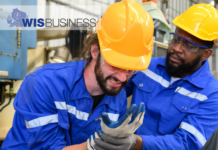Scientists including UW-Madison researchers have developed a method for 3D printing a type of stainless steel that could help manufacturers reduce production costs.
That’s according to an overview from the National Institute of Standards and Technology, which collaborated with the university and the Argonne National Laboratory on the research project. It focused on a metal alloy called 17-4 precipitation hardening stainless steel, which is used in a variety of applications including the aerospace industry due to its durability and anti-corrosion properties.
While 3D printing can offer advantages over traditional manufacturing such as lower costs and enabling flexibility for more complex designs, NIST notes that it can also produce results “that are too inconsistent for certain applications.” That’s of particular concern for metals because of the rapid changes in temperatures involved, according to study co-author and physicist Fan Zhang.
“When you think about additive manufacturing of metals, we are essentially welding millions of tiny, powdered particles into one piece with a high-powered source such as a laser, melting them into a liquid and cooling them into a solid,” Zhang said in the overview. “But the cooling rate is high, sometimes higher than one million degrees Celsius per second, and this extreme nonequilibrium condition creates a set of extraordinary measurement challenges.”
By using a particle accelerator located at the Argonne National Lab to image the steel with X-rays during the printing process, the researchers were able to identify how various factors at play influenced the metal structure. With this improved understanding, they found a specific mix of metals that consistently resulted in 3D printed steel that “matched the strength” of steel produced in the traditional way.
Lianyi Chen, an associate professor of mechanical engineering at UW-Madison and fellow co-author, says the steel they produced “is reliable and reproducible, which lowers the barrier for commercial use. If they follow this composition, manufacturers should be able to print out 17-4 structures that are just as good as conventionally manufactured parts.”
According to UW-Madison, the researchers are patenting their technology through the Wisconsin Alumni Research Foundation.
See more details: https://www.nist.gov/news-events/news/2022/09/researchers-uncover-how-3d-print-one-strongest-stainless-steels






